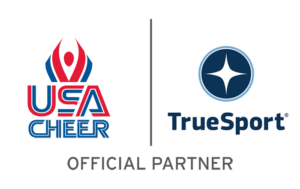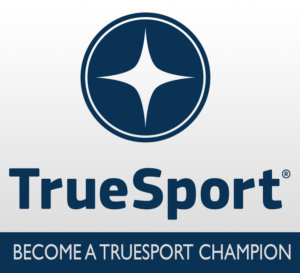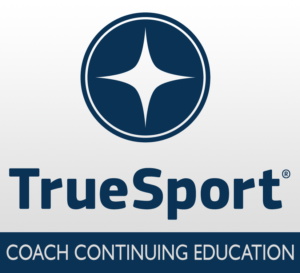Five Things to Know About Sport Specialization
USA Cheer has partnered with TrueSport, to provide new educational tools to equip coaches, parents and young athletes with the resources to build life skills and core values for success in sports and in life. TrueSport, a movement by the U.S. Anti-Doping Agency, inspires athletes, coaches, parents, and administrators to change the culture of youth sport through active engagement and thoughtful curriculum based on cornerstone lessons of sportsmanship, character-building, and clean and healthy performance, while also creating leaders across communities through sport.

Five Things to Know About Sport Specialization
 For parents and coaches, the temptation to push an athlete to specialize in a single sport is tempting, even at a young age. Stories of athletes like Tiger Woods, who was intensely focused on golf since early childhood, give credence to the notion that the only way children will be successful in sport is if they are laser-focused on a singular activity.
For parents and coaches, the temptation to push an athlete to specialize in a single sport is tempting, even at a young age. Stories of athletes like Tiger Woods, who was intensely focused on golf since early childhood, give credence to the notion that the only way children will be successful in sport is if they are laser-focused on a singular activity.
But there are many other great athletes who maintained participation in multiple sports throughout high school. In fact, research is showing that early specialization is unnecessary and may actually be hurting athletes and their performances. Now, many college coaches even prefer athletes who have participated in multiple sports.
Here, Michele LaBotz, TrueSport Expert and sports medicine physician, shares five tips that parents and coaches should know about sport specialization, particularly in younger athletes.
1. Sampling sports improves athleticism
Participation in a variety of sports actually increases a child’s capacity for movement, which will be beneficial as they progress in any given sport. “The more pathways that the body makes between the brain and the muscles helps improve the athlete’s ability to move in a lot of different ways,” says LaBotz. “At a young age, it’s best to consider the opposite of sports specialization, which is sports sampling, where an athlete is trying a bunch of different sports and activities.”
2. Sport sampling creates lifelong athletes
 “Rock climbing, mountain biking, paddleboarding … there are many great sports and activities that are considered “lifestyle sports” rather than high-performance team sports, but they can be so important and helpful for development of athleticism in children and adolescents,” says LaBotz. “For example, the balance and agility kids develop with things like skateboarding and surfing provides a good foundation for more sport-specific skills.”
“Rock climbing, mountain biking, paddleboarding … there are many great sports and activities that are considered “lifestyle sports” rather than high-performance team sports, but they can be so important and helpful for development of athleticism in children and adolescents,” says LaBotz. “For example, the balance and agility kids develop with things like skateboarding and surfing provides a good foundation for more sport-specific skills.”
Research has found that healthy levels of physical activity are determined in large part by family patterns of activity. Furthermore, most young athletes will not end up pursuing their sport professionally, but hopefully will remain active, healthy humans for the rest of their lives. “Early on, consider engaging in a lot of family-oriented activities, not just dropping kids off at the soccer field,” recommends LaBotz.
3. General skills improve specific performances
Ultimately, pursuing a wide variety of sports is not only healthy for a young athlete, but it also is going to make them better at building skill in any sport on which they may ultimately decide to focus. The mental benefits from playing different types of sports—especially trying individual sports in addition to team sports—can help significantly in development. “It is a fallacy that you have to develop these highly specialized skills early in life,” says LaBotz. “Instead, the focus should be on developing different fundamental and foundational skills and to sample enough sports that you’re able to confidently decide where your passions lie.”
LaBotz states that she often hears parents say they don’t want to interfere with healthy activity and their child’s love for a specific sport. In response, she says, “I make a comparison with other healthy behaviors. For example, carrots are healthy, and if a kid likes carrots, that’s great and should be encouraged. But if your kid is ONLY eating carrots, that’s not good. They need more variety in their diet. The same is true for physical activity: Variety is a key component and too much of a good thing is not a good thing.”
4. Athletes who specialize risk injury
 “Many athletes, coaches, and parents think athletes have to specialize to become better, but athletes who do specialize at a young age are more prone to injury and more likely to drop out of sport,” says LaBotz. A focus on a singular sport at an early age may build up imbalances, and injury risk and overtraining are minimized when athletes try sports that emphasize different types of movement, such as some sports that focus on the upper body (e.g., throwing or racquet sports) and others more focused on the lower body (e.g., soccer or other running sports). Additionally, athletes who specialize early often end up with body image standards specific to that one sport, rather than developing an appreciation for everything that their bodies can do athletically, which can lead to issues with body image and disordered eating.
“Many athletes, coaches, and parents think athletes have to specialize to become better, but athletes who do specialize at a young age are more prone to injury and more likely to drop out of sport,” says LaBotz. A focus on a singular sport at an early age may build up imbalances, and injury risk and overtraining are minimized when athletes try sports that emphasize different types of movement, such as some sports that focus on the upper body (e.g., throwing or racquet sports) and others more focused on the lower body (e.g., soccer or other running sports). Additionally, athletes who specialize early often end up with body image standards specific to that one sport, rather than developing an appreciation for everything that their bodies can do athletically, which can lead to issues with body image and disordered eating.
5. Athletes may change their minds
While your 12-year-old may love gymnastics right now, that fact may not be true in five years. Instead, by 17, your athlete may decide that soccer or triathlon is more interesting. LaBotz states, “Long-term success in sport is most likely when parents can help build their child’s capacity and opportunity to learn many different sports and activities. That way the athlete can figure out where their talents and passions lie. If you start specializing in basketball at nine years of age, then you may never learn you could have been a champion at tennis.”
Takeaway
For younger children, participation in a variety of activities and sports experiences is beneficial for the longer-term development of athletic skill. It also provides opportunities for athletes to figure out which sports are the “best fit” for them. Early sport specialization might seem important for sport skill development, but engaging in a variety of individual and team-based sports can lead to a happier, healthier athlete.
What is TrueSport?
The TrueSport Champion Network is a community of coaches, parents, program directors, and athletes who believe in the power of youth sport to build life skills and core values for success both on and off the field. Join TrueSport Champion Network to help promote the positive values of cheer, dance, and STUNT!
The TrueSport Coaching Education Program empowers coaches—the most significant influencers in young athletes’ lives—with a transformative learning opportunity to obtain the knowledge and resources to cultivate, champion, and uphold the rich promise and highest potential of sport.
Additional Training Modules from TrueSport
USA Cheer is proud to partner with USADA’s TrueSport® to bring relevant educational content to the Cheer and STUNT community in order to promote a positive youth sport experience. We are excited to provide access to TrueSport’s experts that take coaching beyond skills and help truly develop the overall athlete by building life skills and core values for success on and off the mat, sideline, field, and court.
Feel free to share these resources with your coaching staff, parents, or athletes!
About TrueSport
TrueSport®, a movement powered by the experience and values of the U.S. Anti-Doping Agency, champions the positive values and life lessons learned through youth sport. TrueSport inspires athletes, coaches, parents, and administrators to change the culture of youth sport through active engagement and thoughtful curriculum based on cornerstone lessons of sportsmanship, character-building, and clean and healthy performance, while also creating leaders across communities through sport.
For more expert-driven articles and materials, visit TrueSport’s comprehensive LEARN resource.
This content was reproduced in partnership with TrueSport. Any content copied or reproduced without TrueSport and the U.S. Anti-Doping Agency’s express written permission would be in violation of our copyright, and subject to legal recourse. To learn more or request permission to reproduce content, click here.



